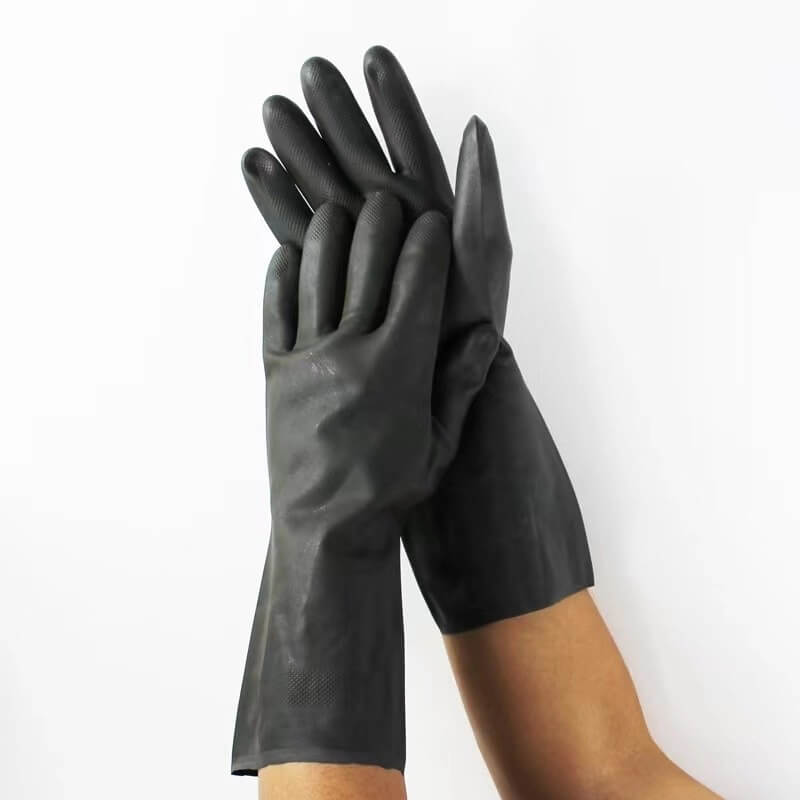In high-risk environments where chemical exposure, oil, and heat are daily challenges, chloroprene rubber gloves (commonly known as neoprene gloves) stand as a critical line of defense. Combining flexibility, durability, and multi-hazard resistance, these gloves are engineered for industries ranging from automotive manufacturing to pharmaceuticals.
Why Chloroprene Gloves Dominate Safety Standards
1. Superior Chemical & Heat Resistance
Chloroprene rubber outperforms natural rubber and nitrile in resisting oils, acids, and solvents. Its molecular structure provides:
- Oil & Grease Protection: Ideal for automotive and machinery maintenance, resisting degradation from fuels and lubricants
- Acid & Alkali Resistance: Withstands common industrial chemicals like sulfuric acid and alkalis (up to 120°C)
- Flame Retardancy: Critical for welding, electrical work, and firefighting applications
2. Enhanced Physical Durability
- Tear & Puncture Resistance: 3–5x stronger than latex, ensuring longevity in abrasive tasks
- Flexibility in Extreme Temperatures: Maintains elasticity from -30°C to 120°C, suitable for cryogenic labs or foundries
3. Allergy-Safe & Ergonomic Design
- Latex-Free: Eliminates risk of Type I allergies, making them ideal for healthcare and food processing
- Textured Grips: Honeycomb or micro-roughened surfaces enhance wet/dry traction, reducing slippage in labs or assembly lines
Key Applications: Where Chloroprene Gloves Excel
- Automotive & Manufacturing
- Handling engine oils, brake fluids, and degreasers
- Assembly line tasks requiring grip and heat resistance (e.g., welding)
- Pharmaceuticals & Laboratories
- Safely managing solvents (acetone, ethanol) and biohazards
- FDA-compliant variants for food packaging and processing
- Oil & Gas Industry
- Protection against hydrocarbons, drilling fluids, and acidic fracking chemicals
- Emergency Response
- Flame-retardant models for firefighting and chemical spill containment
Choosing the Right Chloroprene Gloves: 4 Critical Factors
-
Thickness & Length
- 5–8 mil thickness: Balances dexterity and durability for precision tasks (e.g., 5-mil Chem Defender® gloves for lab use)
- 12-inch cuffs: Extended sleeves protect forearms during chemical transfers
-
Certifications
- EN374: Validates resistance to ≥3 chemicals (e.g., acids, ketones)
- FDA/USDA: Essential for food handling and pharmaceutical compliance
-
Ergonomics & Comfort
- Cotton-Lined Models: Reduce sweat buildup during prolonged wear
- Ambidextrous vs. Hand-Specific: Textured chloroprene variants offer latex-like tactile sensitivity
Maintenance & Safety Tips
- Inspect Regularly: Check for swelling, discoloration, or cracks after exposure to aggressive chemicals
- Clean Properly: Use pH-neutral detergents; avoid benzene or halogenated solvents that degrade material
- Storage: Keep in cool, dark areas to prevent ozone-induced cracking








